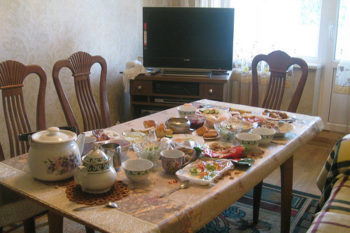Calendars come in many forms, from huge ones hanging on walls to pocket-sized ones and today, digital ones on the computer or mobile. No matter what changes, one thing remains constant – the calendar itself. We have become so used to the Gregorian calendar that no one needs reminding about the day the New Year begins – the first day of January. It is difficult indeed to think of all the calendars which preceded the one we are so used to today.
However, one place where the ancient calendars still survive is in India, even though we follow the Gregorian calendar in our day to day life. When it comes to family celebrations, be it birthdays or weddings, a sacred thread ceremony, or even a death in the family, the first thing we hunt for is the Hindu calendar. Here again, there are so many versions, depending on the region we belong to. While some of us follow the solar calendar, others follow one which is called the ‘Luni-solar calendar’. Confused? Well, it is rather confusing even to those of us who have grown up with it. Just to give you an idea of the similarities and differences, let me tell you about two different new years that we celebrated this year.
Our family hails from the state of Tamilnadu, at the southern end of the country, and we live in Mumbai, on the western coast.
The Tamil Solar Calendar
As Tamilians, we follow the solar calendar, which starts in mid-April. Our new year’s day is most usually called the Tamil New year, though we call it ‘Puthandu’ which simply means – the New Year. We also share this day with people of many other states, such as Kerala (Vishu), Orissa (Mahabhishuba Sankranti), West Bengal (Poila Boisakh), and Punjab (Baisakhi).
For us, the celebrations are rather simple. We clean our house and decorate the area outside with beautiful decorated patterns drawn with rice paste, called kolams. We hang mango leaves symbolizing a fruitful life outside our doors, wear new clothes, visit temples and bow down to our elders. The most important part of the day is the feast, which is made in such a way that it involves every possible taste – salt, sweet, bitter, sour, spice and savory. The feast begins with the payasam (a sort of sweet porridge made with milk and rice), the sweet dish symbolizing a sweet beginning to the new year. This is followed by the main course – rice, sambhar and rasam – which represent the salty and spicy tastes. The side dishes include vegetables, and also a special dish made with curd, representing the sour taste. The savory taste is represented by the use of raw mango in various side dishes, since they grow in abundance at this time of the year. Added to this, is a special dish made with neem flowers, which are slightly bitter in taste, but extremely good for health and help in digesting this heavy feast.
New Year in Mumbai
Mumbai, where we live, is part of Maharashtra, on the western coast, where New Year comes about a fortnight before ours. The difference in dates comes from the calendars followed in the two states. The Maharashtrian New Year is called ‘Gudi Padwa’, and this day is shared with the states of Karnataka and Andhra Pradesh (Ugadi), Kashmir (Navreh), and also that of the Sindhis (Cheti Chand).
The name ‘Gudi Padwa’ comes from the flag-like structure called Gudi which is displayed over every house during the festival. Made of a green or yellow cloth hung over a stick and secured with a small urn at the top, the Gudi symbolizes the victory of good over evil and heralds a new year full of happiness and prosperity. Here again, the house is cleaned and decorated in anticipation of the New Year, and the feast is the culmination of the celebration. As in the south, neem leaves are used in the preparation, usually mixed with jaggery to make the bitter taste palatable. This is believed to cleanse the system and boost the body’s immunity, thus ensuring good health for the year ahead. However, the best part of the feast is the main course, consisting of pooris (a fried form of Indian bread) and shrikhand (sweetened yoghurt). Shrikhand is one of the delicacies of Maharashtrian and Gujarati cuisine, and is one of the most important and loved part of the multi course meal, and is served only on special occasions like this one.
Gujarat and the start of the financial year
These two dates between them cover most of the new years celebrated all over India, but as with everything, there are exceptions – the most interesting being the Gujarati new year, which is celebrated the day after Diwali (Oct/Nov). Incidentally, this would be best equated with the beginning of the new financial year for Indians, since the Gujaratis are the merchants of India, who celebrate the day by praying to the Goddess Lakshmi – the goddess of prosperity. This is the day they inaugurate their new account books and pray to them before starting any transactions. The celebrations at homes are the same, with the houses cleaned and decorated with festoons, and patterns drawn with coloured powder outside the houses. Children collect raw salt from saltpans, and share them with people. This is called ‘sabras’ which means – all taste. Thus, no matter which part of the country we belong to, the new year is a celebration of taste, probably signifying the multitude of changes we face the year round, and preparing ourselves for accepting the bitter with the sweet, the best with the worst.
Read more
A Tamil wedding
Diwali celebrations in India
Rakhi: Celebrating the brother-sister bond





It’s fascinating just how many different traditions, celebrations, languages… live side by side in India. This post clears up a lot of confusion. Thanks Anu!